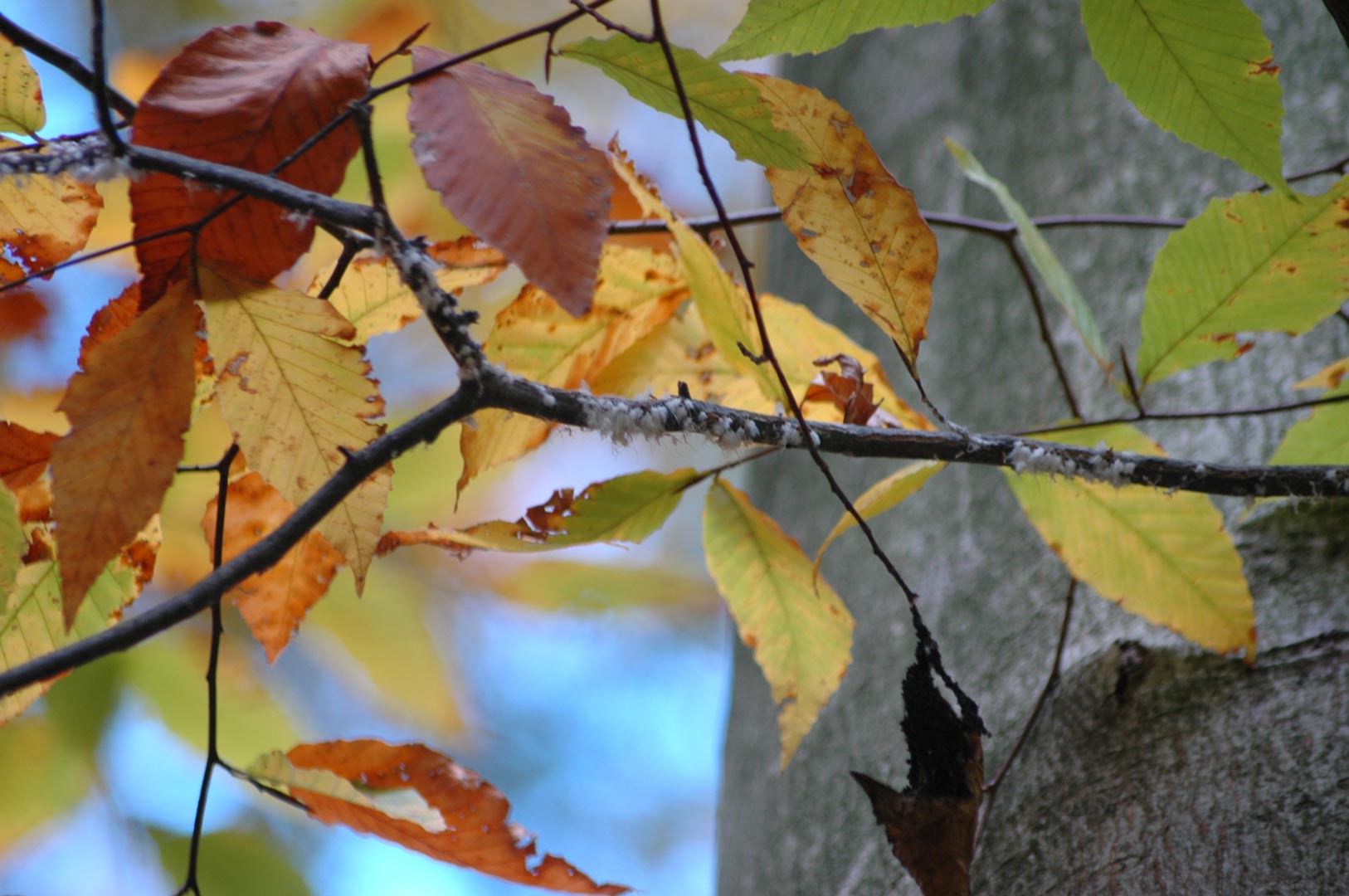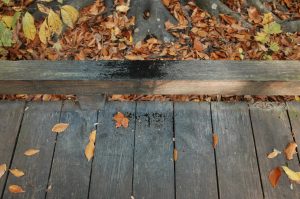The work of busy beech blight aphids

While hiking along the many trails of our Metro Parks a mysterious substance can be discovered this time of year. As this mysterious black growth unveils itself, it appears to be oozing off the limbs of beech trees. It is in such forests, with these beautiful beech trees, that an observant eye may witness nature’s Halloween decor draped from their branches.
This feathery, black substance may appear to haunt our forests as it teeters back and forth in the wind and creates an almost spooky feeling, but it is mostly harmless. The mystery substance draped from the trees is known formally as sooty mold. This fungus is the aftereffect of tiny, fuzzy, whimsical looking insects known as the beech blight aphid.
A nice place to see this nature-made Halloween effect is the Dripping Rock Trail at Highbanks Metro Park. This trail offers passersby some close-up views of spectacular old beech trees. These giant trees bend and twist toward the sky leaving hikers to feel very small and experience a miniature sense of self in their great towering presence.
Young beech trees are growing alongside these mammoths with hopes to live long and stretch tall. However, these young trees are the most susceptible to this Halloween-themed growth. The insect ultimately responsible for the sooty mold is the beech blight aphid, “Grylloprociphilus imbricator,” a wooly aphid species aptly named for its appearance.
These pear shaped, tiny light-blue to white insects, when all huddled together in a colony, cause the tree limb on which they are huddled to appear snow covered. These insects have a wildly furry outward appearance. It is said that they resemble tiny wisps of cotton with eyes. Their average size is known to be less than a quarter inch.

The aphids depend on the sap of beech trees. They eat the sap from this thinly barked tree and after consuming the sap they produce a waste product. The more beech blight aphids present on a tree, the more waste that is created. This waste product, termed honeydew, is essentially sugar water. The sugary honeydew is left behind on the branches, limbs and leaves of the beech trees.
From this honeydew, a fungus grows—a black sooty mold that very much resembles soot. It develops on the honeydew creating an eerie feeling in the forests, a haunted forest effect, just in time for Halloween! From large deposits of honeydew the amount of sooty mold that develops can be mystifying. It can collect and become very thick. However, the sooty mold is relatively harmless as it cannot penetrate the epidermis of the tree. In other words it only affects the outward surface of the tree. It hangs neatly from the trees and could be described as autumn’s spooky version of tinsel on a Christmas tree.
Beech blight aphids have earned an interesting nickname. A behavioral trait of the beech blight aphid helps to explain its goofy moniker, the “boogie-woogie aphid.” They form dense colonies when they are feeding. If disturbed for any reason one of their defense mechanisms is to dance! The aphids raise their rear ends into the air and sway back and forth. This is a signal to predators, like moth larvae, informing them to back off or be bitten. Colonies of aphids participate in this defense together, so that hundreds, or in some cases thousands, of these fuzzy insects are dancing all at once. This movement may be dizzying for some predators and the constant movement may make individuals difficult to catch.
Not all types of aphids are harmless to their host plants. However, this particular species of wooly aphid is believed to pose no real threat to a healthy beech tree. Only in massive colonies of beech blight aphids is there any real cause of concern for the health of the tree. The sooty mold that creeps its way onto the excreted honeydew to some is unsightly, but it is natural and a part of the forest ecosystem.
This autumn as you hike on the crunchy fallen leaves in the brisk weather, be sure to look for that once mysterious substance now identifiable as sooty mold and the tiny dancing beech blight aphids. Enjoy hiking and the many natural wonders within your Metro Parks.
(By Beth Renner, Naturalist at Blacklick Metro Park)
